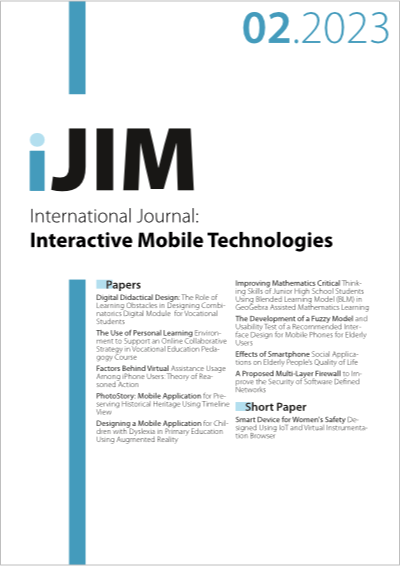Smart Device for Women's Safety Designed Using IoT and Virtual Instrumentation Browser
DOI:
https://doi.org/10.3991/ijim.v17i02.35227Keywords:
IoT, Ddevice, LCD, VI server, SMSAbstract
In the present technological developments, the internet of things (IoT) technology connects all interconnected networks. The attacks on women are increasing daily in Indian countries. If the woman is not carrying a mobile phone or device, she cannot contact the police station or other family members. This proposed method will help the women identify the exact location and inform the police station in such a scenario. The Emergencies, the women, can press the button once the location information is tracked. The purpose of this project is to help women in emergencies. Location tracking and short service messages are also sent to the family members and nearby police stations.
Downloads
Published
How to Cite
Issue
Section
License
Copyright (c) 2022 Nagarjuna Telagam, Nehru Kandasamy, Somanaidu U

This work is licensed under a Creative Commons Attribution 4.0 International License.



